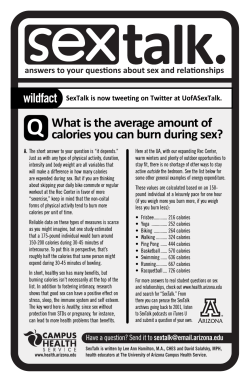
MLN 4-6-15 handout final
MLN 4-6-15 Discussion of 10-minute problem from EngageNY (see p. 19 of Fall 2013 sample items at https://www.engageny.org/resource/regents-examsmathematics-algebra-i-sample-items) Possible Reasoning or Procedural Questions to ask On the axes below, graph the function, C, where C(x) represents the number of Calories in x mints. 1) What type of function is this (linear, quadratic, exponential, or something else)? 2) What is the slope and y-intercept of this line? (Note: this question might be better with part “b”) 3) Would it be better to represent the slope of this line as a fraction or as a decimal? Why? a. Write an equation that represents C(x). 1) How can you make your equation/function as precise as possible? 2) How many calories are in ONE mint? b. A full box of mints contains 180 Calories. Use the equation to determine the total number of mints in the box. 1) Does it make sense to need to round your answer? Why or why not? 2) Why is your answer reasonable? 3) What happens when you use your equation to check the fact that 3 mints contain 10 calories? Procedure: How could you display the given information to analyze the pattern? Reasoning: Why does a graph help us identify the function of calories of mints? a. b. c. How many calories are in 0 mints? Is the rate of change constant or varying? What is the rate of change of calories to mints? How can you write the equation of a line? What does x represent? C(x)? If you are given calories, how can you determine the number of mints? Ways to revise the problem o Find the way to change the function so it is not linear…(maybe not calories) o Give them the function and have them write the story. o Some how add another function … if you laugh for 10mins you burn 25 calories… Create an argument that describes how long you need to laugh in order to burn the calories gained by eating a whole box. o High School: This problem could be made more challenging by having the students create their own graph (remove the labels and axis marks), or by having the students create more models of this situation (a table, for example, in addition to the graph and equation) o Middle School: This problem could be made less challenging by giving the number of calories (hopefully a whole number) for a single mint, rather than for 3 mints. o HS: Add in a component that involves burning off calories at an exponential rate o MS: Provide an “unstucking” question – why does the graph only note the values 3, 6, 9, … on the x-axis? Source: participant responses to the pre-‐survey Prepared for MLN 4-‐6-‐15 by Dr. Jackie Dewar, LMU Emerita Professor of Mathematics/jdewar@lmu.edu
© Copyright 2025












